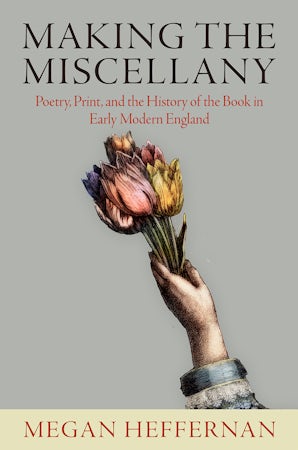book Goliath's Curse, the history and future of societal collapse
for - to - book - Goliath's Curse: the History and Future of Societal Collapse - Luke Kemp
book Goliath's Curse, the history and future of societal collapse
for - to - book - Goliath's Curse: the History and Future of Societal Collapse - Luke Kemp
Allen, Roland. The Notebook: A History of Thinking on Paper. United Kingdom: Profile Books, 2023. https://uk.bookshop.org/p/books/the-notebook-rolad-allen/6331084.
Keeping Notebooks Could Change Your Life by [[John Dickerson]]
for - from - MIT Press Direct - The Brain Abstracted: Simplification in the History and Philosophy of Neuroscience - M. Chirimuuta - 2024 - https://hyp.is/oeRL9t8REe-06ZvevM0y8g/direct.mit.edu/books/oa-monograph/5741/The-Brain-AbstractedSimplification-in-the-History - to - interview - Youtube - channel: Brain Inspired - Episode: BI 186 Mazviita Chirmuuta: The Brain Abstracted - 2024, Mar - https://hyp.is/3XW2ct8mEe-Fj79NfLEaZQ/www.youtube.com/watch?v=NwNHW4otoJQ
M. Chirimuuta
for - from - Chapter 9 of book - The Brain Abstracted: Simplification in the History and Philosophy of Neuroscience - M. Chirimuuta - 2024 - https://hyp.is/Ne0vsN8TEe-0gKfJ_-CHFQ/watermark.silverchair.com/c008400_9780262378628.pdf?token=AQECAHi208BE49Ooan9kkhW_Ercy7Dm3ZL_9Cf3qfKAc485ysgAAA1AwggNMBgkqhkiG9w0BBwagggM9MIIDOQIBADCCAzIGCSqGSIb3DQEHATAeBglghkgBZQMEAS4wEQQMQiuxj5ADRMKA_9kUAgEQgIIDA4n2hqWRY4iDrmrcDrCx6YjsLiXeoqGBMrezs_kymEj3y1Jqh_UlW5WfGUNhBfTC5IpUGikuqBzjC9_UepW_n-SIy8wOnvMB8W08sihzohH-Dzof0oothB7tfYDAZJe04dVrYtUetmqDpi53kj_LaU6h3UNR9ZZpc8KFqtL_0IGhnMT8wvJiknRHbD-SXDTiVAFAzRGKqckrbrrm4KDfIjCpbBRa1QaRVoTIgo0Kwp4J8Mb9KNA0czcYDBkL4vjLBNZY-a0VdIJlYAzbyHeLOtugVKGmq1Lfu8K1zMNEi6HMthJDxRx9Kmv3Jbgy0hi7_dcwkURYj4VuBDU24DihiwMlXYgkl3uAop9jwd-fvlbExhBUD_FoR4kmq4iegAr62meXal4dvA2BwJIv_zISyqP3ez4LEZZpGp1r3OCq1bK4r-ono7w0h3VOCkBXq2BWUy4lb2Norec7yGcWxYLf3bvMJyxxRVKjcpV4us6IlDg6bLE5a2YCp9uh8vdZC_YjH-bkHUnxIapqN4D1iCvRUhtG9mvlnx4PBPZPUSTKEf9AxvVOp2nST27YGVUbKU8Qq6J6y5hD7vhTqx9-YjinBxOw2FH_hVL1ZgDSpO-glVzORMJRI1WYUz_w7Kfc3eG3OBVB6amY7_FULAqhtICn_N1Xao-hAFAkfIEk0MMQd0XkGIMtsRKUL_5Rhzw_kGnHMnWFCCVdlt1LKGvkDqo_0kxYB1aKEUiykx8nsmZOksso2VCRTXBhBMcsrDmOpBM4zKPpbi0qfRwPEJmQ2JkhNoVFhSJvdmJ8yoAd4ZH6i--LohA_TCmrD-wE6hjCDrmm9VbwYqyLXslzulCS_9IQBG9k_jMZ5doqutYbJs6UrpWHcYqKeT0HKbzPWGp3uMmDTvs-YUyUkmwTxH7GTlaNC5eUJ64sQt7-GhcqbPq30Pe5tLvX2ztPyln1uiuH9GBY_RiXWR2JMmYz46Kue3Iu35mJCKpfNWTO-z41USYMNMMjlB0jgsUGT0BzedInF9UvZ31M9Q - to - pdf of book - The Brain Abstracted: Simplification in the History and Philosophy of Neuroscience - M. Chirimuuta - 2024
for - Youtube - book review - Reviewing "The Brain Abstracted - Simplification in the History and Philosophy of Neuroscience" - M. Chirimuuta - Youtube channel: Philosophy of Psychiatric Diagnoses - 2025 Jan 23
I think the book is fantastic I'm now going to outlined review of a book and then at the end briefly point out some potential implications for psychiatric diagnosis and neurodiversity
for - implications of book "The Brain Abstracted" for neurodiversity - SOURCE - Youtube - book review - Reviewing "The Brain Abstracted - Simplification in the History and Philosophy of Neuroscience" - M. Chirimuuta - Youtube channel: Philosophy of Psychiatric Diagnoses - 2025 Jan 23
Lacy, Tim. The Dream of a Democratic Culture: Mortimer J. Adler and the Great Books Idea. New York: Palgrave Macmillan, 2013. https://amzn.to/3R2rCox.
https://en.wikipedia.org/wiki/Henri-Jean_Martin
Henri-Jean Martin (16 January 1924 – 13 January 2007)
Febvre, Lucien, and Henri-Jean Martin. The Coming of the Book: The Impact of Printing 1450-1800. Edited by Geoffrey Nowell-Smith and David Wootton. Translated by David Gerard. 1st ed. Foundations of History Library. 1958. Reprint, London: N.L.B., 1976.
This myth is mostly the blame of the novelist Washington Irving
for: Washington Irving, book - the History of New York, book - A History of the Life and Voyages of Christopher Columbus
comment
interesting fact: knickerbocker
Milton,for example, wrote more or less lengthy headings, or "Arguments," as he called them, for each book of Paradise Lost.
If a guy got lucky at a restaurant, it got included.” Jauregui waxes poetic about The Address Book, calling it “sexual memory…told by spaces.”
Something interesting here about a "gossipy collaboration" of an address book that crystallized a "sexual memory...told by spaces".
https://hcommons.org/deposits/item/hc:33585/
See also Wiki created in combination with this course: https://digitalbookhistory.com/culturesofthebook/Main_Page
Archaeology of Reading project
https://archaeologyofreading.org/
The Archaeology of Reading in Early Modern Europe (AOR) uses digital technologies to enable the systematic exploration of the historical reading practices of Renaissance scholars nearly 450 years ago. This is possible through AOR’s corpus of thirty-six fully digitized and searchable versions of early printed books filled with tens of thousands of handwritten notes, left by two of the most dedicated readers of the early modern period: John Dee and Gabriel Harvey.
Perhaps some overlap here with: - Workshop in the History of Material Texts https://pennmaterialtexts.org/about/events/ - Book Traces https://booktraces.org via Andrew Stauffer, et al. - Schoenberg Institute's Coffe with a Codex https://schoenberginstitute.org/coffee-with-a-codex/ (perhaps to a lesser degree)
Thus, the sensitive seismographer of avant-garde develop-ments, Walter Benjamin, logically conceived of this scenario in 1928, of communicationwith card indices rather than books: “And even today, as the current scientific methodteaches us, the book is an archaic intermediate between two different card indexsystems. For everything substantial is found in the slip box of the researcher who wroteit and the scholar who studies in it, assimilated into its own card index.” 47
- Walter Benjamin, Einbahnstra ß e, in Gesammelte Schriften, vol. 4 (Frankfurt am Main: Suhrkamp Verlag, 1928/1981), 98 – 140, at 103.
Does Walter Benjamin prefigure the idea of card indexes conversing with themselves in a communicative method similar to that of Vannevar Bush's Memex?
This definitely sounds like the sort of digital garden inter-communication afforded by the Anagora as suggested by @Flancian.
This looks interesting with respect to the flows of the history of commonplace books.
Making the Miscellany: Poetry, Print, and the History of the Book in Early Modern England by Megan Heffernan

https://infohist.fas.harvard.edu/news/information-cultures-series-john-hopkins-university-press
This looks like a fascinating series and who could go wrong with Ann Blair, Anthony Grafton, and Earle Havens?
Also interesting to see what sorts of things they will find interesting at the cutting edge of all these disciplines.